One of the best tricks you can use to get a super tender smoked brisket is wet aging. Wet aging a brisket was standard practice on the competition barbecue circuit from many years before the availability of Wagyu briskets made the process less needed.
Keep reading and we will cover:
- Why Wet Age a Brisket
- How to Wet Age a Brisket
- How to Tell if Your Brisket Turned Bad
- Where to Buy a Wet Aged Brisket
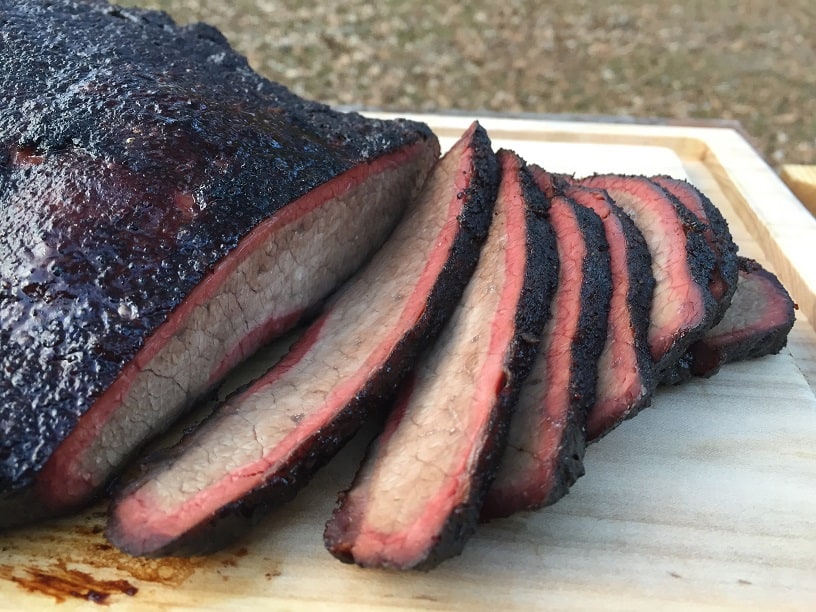
Why Wet Age a Brisket
Wet ageing a brisket is the process of storing a brisket in its sealed cyrovac packaging under refrigerated conditions for an extended period of time.
During the wet aging process the enzymes in the brisket start to break down and tenderize the meat.
You have probably seen or read about the best steak houses serving Dry Aged Steak. This is the same idea but instead of letting the briskets age in the open air (which facilitates moisture loss) they are aged “wet” in the cryovac. (By the way, here is an article on How to Dry Age a Brisket)
How to Wet Age a Brisket
Wet aging a brisket is pretty simple. Buy a whole packer brisket that is still in the cryovac packaging, put it in your refrigerator and wait.
Many barbecue teams have a refrigerator dedicated for brisket ageing. They didn’t want to use their normal refrigerator because the door kept getting opened and the temperature would swing around too much.
There is a lot of debate on how long you should wet age a brisket and Texas A&M University even conducted a study to try to find the answer.
Wet aging is a game of nerves. The longer you can wet age a brisket the more tender it will become. If you let it age too long though it can turn and go rancid.
Some folks think that 30 days is optimum for wet aging briskets while others go for 45.
What makes this tricky is that the wet aging process begins as soon as the brisket is put into its packaging at the slaughterhouse. If you go to the grocery and pick up a brisket you usually have no idea how long it has already been wet aging. A week? Ten days?
The solution to the problem is to order a case of briskets. The case is marked with the date it was packed which is the same as the kill date of the animals.
My solution is to buy my briskets at Costco. I can pick up a Prime packer for $2.99/lb that is labeled with the actual pack date.
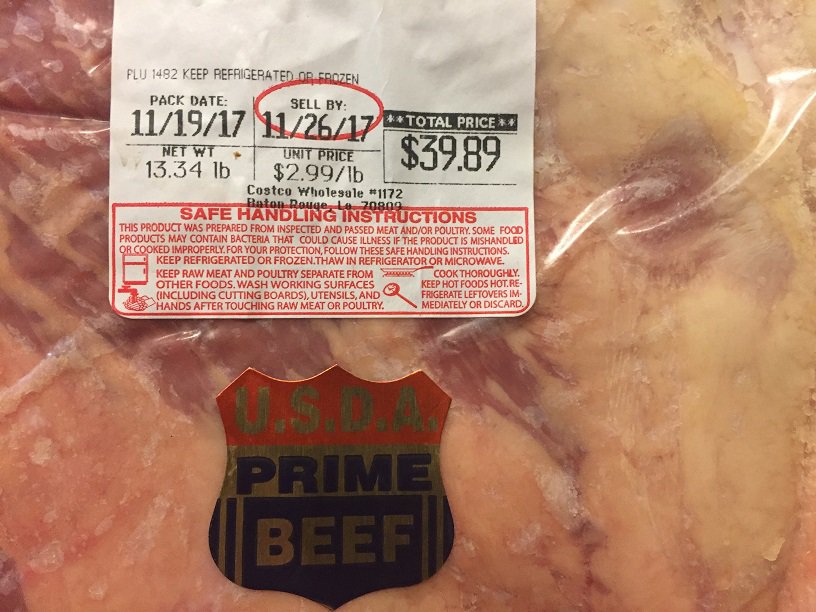
This brisket had a pack date of November 19th and it sat on the top shelf of my refrigerator until January 1st for a total wet ageing time of 42 days.
After the brisket has aged you can cook it immediately or place it in the freezer and use at a later date.
How to Tell if Your Wet Aged Brisket has Gone Bad
After 42 days of ageing I opened up the cryovac and it smelled….just like a brisket ought to smell.
You can usually tell in advance if something has gone wrong in the aging process. If the cryovac starts to bubble up or inflate a little while aging then you have some reactions going on that will not turn out well. At that point you either need to cook the brisket as soon as possible or get it into the freezer.
If you take the brisket out of the cryovac and it smells nasty then I’m sorry to say that that bad boy has turned on you.
Like I said, it can be a game of nerves.
Where to Buy Wet Aged Briskets
If you want to try smoking a wet aged brisket but don’t feel like waiting a month then you can buy a wet aged American Wagyu brisket from Snake River farms.
The brisket you are looking for is the Gold Grade. The website no longer says how long the brisket has been wet aged but it used to say 28 days.
This is a bit of an indulgence as it is their most expensive brisket.
Smoking a Wet Aged Brisket
I hit this wet aged brisket brisket with one of my favorite brisket rubs and smoked it on a kettle with a few splits of cherry.
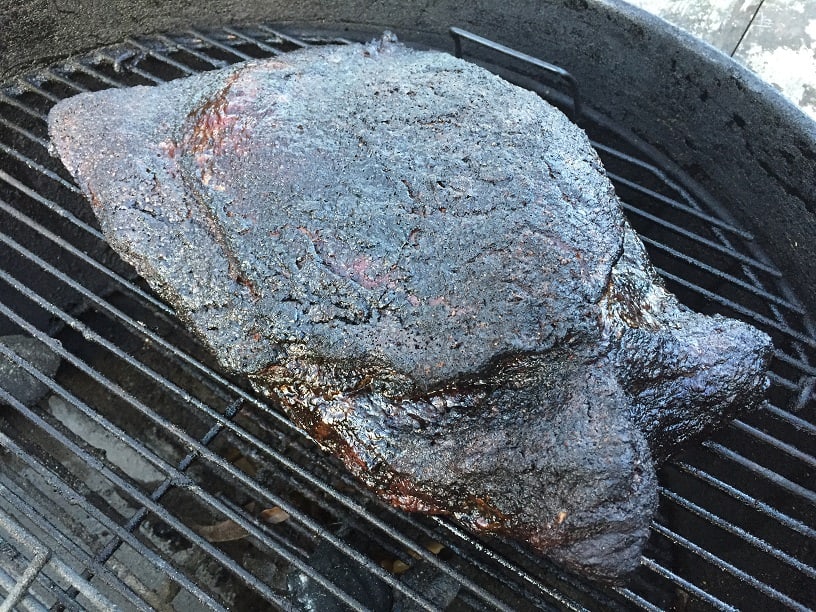
I didn’t bother wrapping the brisket and after about 10 hours it had a beautiful bark and a probe slid through the flat like butter.
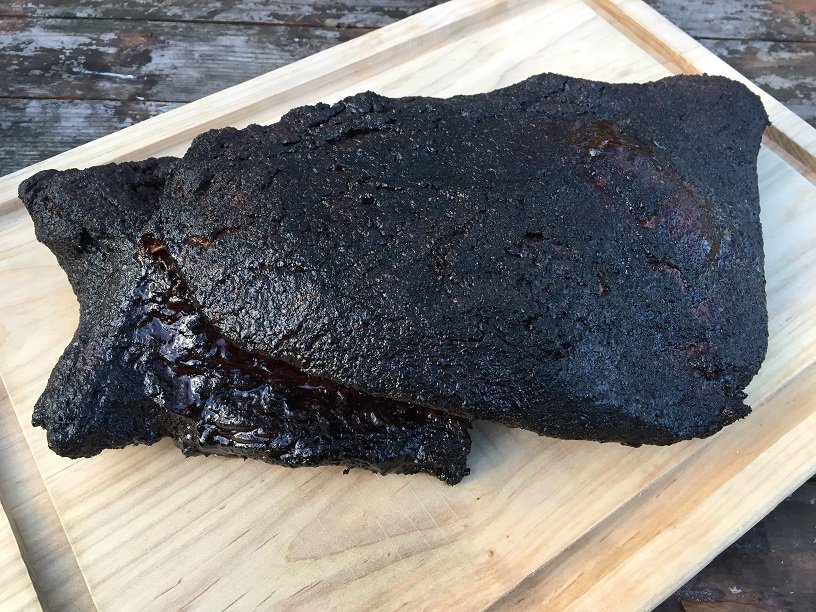
I could tell a significant difference in the tenderness of this brisket compared to my usual product. The flavor was pretty much the exact same but, yeah….wet ageing made this one of the most tender briskets that I have ever made.
If you have the time and inclination then you should give wet ageing a try. It is an easy and effective barbecue trick to have up your sleeve.

Related Posts:

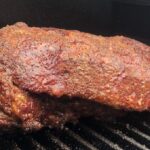
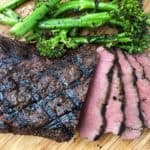
David,
Interesting article on wet aging. My question is: Can you wet age, for say 40 days, and then freeze until you are ready to use?
Absolutely, as long as the cryovac is still intact.
Hi. Does this apply if the brisket frozen, then defrosted and wet aged in the sealed pack?
As long as the cryovac seal remains intact and no air has leaked into the packaging then you can use this technique.